As a programmer, it’s important to stay up-to-date on the latest tools and technologies. CI/CD tools are essential for automating your workflow and ensuring quality code. In this blog post, we’ll share the top 10 CI/CD tools used by programmers and why you should learn them in 2022. Stay ahead of the curve and learn about the latest CI/CD tools!
Introduction
Continuous Integration (CI) and Continuous Delivery (CD) are commonly used processes that help enterprises become more agile by expediting the delivery of software-as-a-product. CI/CD automates the software development process, reducing delivery time from months and weeks to days and hours.
Although often spoken of together, Continuous Integration and Continuous Delivery are two distinct phases in the software development lifecycle. To get a better understanding of the top 10 best CI CD tools to learn in 2022, let’s explore what CI CD is in more depth.
Table of Content
- What is Continuous Integration (CI) and Continuous Delivery (CD)?
- Top 10 Best CI/CD Tools to Learn in 2022
- Why Should You Learn Jenkins Before Mastering Other CI CD Tools?
What is Continuous Integration (CI) and Continuous Delivery (CD)?
Continuous integration and delivery (CI/CD) is a key agile practice that is being adopted by more and more organizations worldwide due to its positive impact on a company’s bottom line. By automating the software build, test and deployment process, CI/CD can help businesses to improve their efficiency and quality, while reducing costs.
Continuous Integration (CI):
Continuous Integration is a process of integrating code into a codebase frequently. The aim is to make small integrations often, as tiny code changes can result in fewer unwanted consequences. All integrations are checked for mistakes through build automation, with no manual intervention.
Continuous integration is a development practice that requires diverse automation tools to help speed up the process of developing, testing, and packaging software products. By integrating code constantly, it helps to early detect and fix problems, saving time in the long run.
Furthermore, continuous code integration fosters collaboration among teams which consequently leads to developers quickly delivering high-quality software.
Continuous Delivery(CD):
Continuous Delivery is the process of frequently deploying small software changes, such as bug fixes, UI enhancements, and new features. In other words, Continuous Delivery builds upon the work of Continuous Integration by adding in extra steps like staging, testing, and deploying the code.
Even though Continuous Integration is something that developers typically handle, Continuous Delivery is the responsibility of operations.
There are many benefits to making small, incremental changes rather than releasing a big software upgrade all at once. Continuous, minor changes are less disruptive and make it easier to troubleshoot and roll back if something goes wrong. They also allow you to rapidly add new features to meet customer demands.
Continuous Delivery (CD) is a process that helps ensure software always traverses the CD/CI pipeline smoothly and without errors. Like Continuous Integration, CD focuses on automating regression, testing, and performance monitoring to identify potential issues quickly.
By having fewer changes in each software update, it’s easier to test the code precisely and target any potential problems. This leads to higher-quality code being delivered to end-users more quickly.
Top 10 Best CI/CD Tools to Learn in 2022
With the increasing popularity of agile practices, many new CI CD tools have come onto the market in recent years. This can be confusing for aspiring software engineers, making it difficult to choose which CI CD tools will best support their career growth. To simplify the selection process, this list of top 10 CI CD tools includes the ones you need to learn in 2022.
- Shippable:
Jfrog’s Shippable is one of the best software release tools for DevOps engineers because it is error-free and predictable. With support for Docker, Shippable’s automation platform makes it easy to develop, test, and deploy applications.
Seamlessly integrate with popular tools like HipChat, Slack, Kubernetes, Google Container Engine, Amazon ECS, Docker, Bitbucket, GitHub, Nose, xUnit, JUnit, Cucumber, and others. Users can deploy the SaaS variant of Shippable to a Public Cloud, and the Server variant to a self-hosted infrastructure or a Private Cloud.
- GitLab CI:
GitLab CI is one of the top-rated CI CD tools available on Windows, macOS, and Linux. With a super-friendly UI, GitLab CI packs a variety of features into a simple dashboard, including Continuous Integration, Continuous Delivery, Code Reviews, and Continuous Deployment. The widely-applied CI CD tool’s caching mechanism is a time saver.
The cache can be shared across different branches as well as within the same branch. Caches can also be disabled for specific tasks. GitLab CI is a great tool to use, as it allows users to trigger builds via the Shell Executor, similar to terminal-based programs. It provides a smooth transition from other CI CD tools and offers developers the capability to define custom pipelines. - TeamCity:
TeamCity is a top-tier CI CD tool that was developed by JetBrains. It’s open-source and free-of-cost, making it easily accessible for anyone who needs it. It also integrates well with other popular software like Jira Software, Azure DevOps, NuGet, Maven, Visual Studio Team Services, and Docker.
What separates TeamCity from other CI CD pipeline tools is its ability to run parallel builds across different environments simultaneously. This makes it an incredibly flexible tool that can be used for a variety of builds.
The on-site variant of TeamCity works fine on various cloud platforms, including vSphere, VMWare, Google Cloud, and AWS. The top-tier CI CD tool also allows users to run build agents with Kubernetes and define pipelines using the Kotlin-based Domain Specific Language (DSL). - Buildkite:
Buildkite is a leading ci cd tool that gives developers the ability to run scalable, fast, and secure pipelines on an on-premise platform.
Buildkite can be installed on Docker, macOS, Linux, or Windows, and jobs can be run parallely across multiple agents on a centralized platform. This provides greater visibility and allows users to build internal tools leveraging GraphQL APIs.
Buildkite has an expanding plugin ecosystem, and it permits tight integration with other tools, such as Campfire, Slack, and HipChat. The high-level CI CD pipeline tool is free to students, educational institutions, and open-source programs and projects.
- Codefresh:
Codefresh was developed with Kubernetes and offers full support for GitOps. It integrates with well-known tools such as Puppet, Pulumi, Terraform, Slack, GitLab, Bitbucket, and GitHub.
With an integrated Kubernetes Dashboard, Codefresh gives programmers increased visibility, unlimited scalability, and superior speed across an array of platforms, including Azure, Amazon Web Services, and Kubernetes.
Along the lines of the best CI CD tools on the market, Codefresh comes with build parallelism support, and it features both on-premise and cloud variants. The tool also has a CLI (Command Line Interface) called the Codefresh Runner. It provides a scalable and secure way to deploy code, trigger builds, and run tests.
- Semaphore:
Semaphore’s programmable CI CD pipelines support builds on macOS, Linux, and Android platforms, and developers can use the Command Line Interface (CLI) to get insights and debug failures quickly.
Semaphore also supports a broad range of programming languages, including Rust, Ruby, PHP, C - Bitrise:
Bitrise is a powerful CI/CD tool that can run builds on both Linux and macOS machines. It provides strong support for many popular programming languages used in mobile development, such as Flutter, Reactive Native, Iconic, Cordova, Objective C, Swift, and Kotlin.
Bitrise is widely regarded as one of the best CI/CD tools for its cloud-based, mobile-first approach. It is available for free to open-source projects and individual mobile developers. However, Bitrise also offers an Enterprise Build Platform (EBP) for organizations that need high availability, advanced security, and flexibility.
Bitrise saves users from having to install expensive hardware. It blends well with ad hoc, public, and private Git services, such as GitLab Enterprise, GitHub, Bitbucket, GitLab, and GitHub Enterprise. - AutoRABIT:
AutoRABIT is one of the few CI CD tools that offers custom-made solutions for the Salesforce platform. With an interactive, user-friendly interface and support for over 120 metadata types, AutoRABIT can help users avoid the additional effort needed to incorporate Salesforce-oriented tools into their systems. - Strider:
Using MongoDB as its database storage structure, Strider, written in JavaScript / NodeJS, is one of the most-used CI CD tools supporting a broad range of popular languages, including Ruby, NodeJS, and Python.
Users can integrate Strider with powerful tools, such as Bitbucket, Heroku, GitHub Enterprise, GitLab, GitHub, and Slack to get notifications. Additionally, it is easy to extend and customize various functionalities with Strider’s built-in plugins.
- Jenkins:
If you’re looking for one of the best ci cd tools on the market today, Jenkins is a great option. It’s open source, cross-platform, and easy to use, making it a popular choice among developers. It also integrates smoothly with major cloud platforms like Azure, Google Cloud, AWS, and DigitalOcean.
Plus, its CICD pipeline includes a set of useful tools that can help you with modeling and implementation.
Available for MacOS, Windows, and Linux platforms, Jenkins has a strong community and a vibrant plugin ecosystem of over 1500 plugins. It is open source, free, robust, and extensible, which is why it is a favorite for large organizations and startups alike.
Why Should You Learn Jenkins Before Mastering Other CI CD Tools?
Jenkins is a powerful tool that has been disrupting the software development ecosystem for the past few years. It is increasingly becoming an essential tool for DevOps engineers and Java programmers who work in the field of DevOps and Agile.
Fortunately, in today’s Internet era, you can learn Jenkins from the comfort of your home and obtain an industry-recognized certificate from a top certification provider, TopD Learning.
To accelerate your career in 2022 or after that, enrol in the “Continuous Integration with Jenkins Certification Training Course” or “DevOps Certification Courses” offered by TopD Learning. It will teach you all the required knowledge and skills with hands-on practice sessions so you can learn the concepts clearly and put them to use. Sign up today.
Conclusion
We hope this article has helped you understand what are the top 10 CI/CD Tools Used by Programmers and Why you should learn them in 2022.
DevOps engineers are responsible for managing the IT infrastructure that handles software development. They communicate with development teams, assist in coding and scripting, deliver the results of testing, troubleshoot, and take user feedback into account.
The DevOps market is expected to grow from USD 3.42 Billion in 2018 to USD 10.31 Billion by 2023, at a Compound Annual Growth Rate (CAGR) of 24.7% hence it is a great technology to learn and advance your career.
Do you think a career in DevOps sounds right for you? If you’re passionate about IT and working with teams, then TopD Learning has the perfect DevOps courses for you to get started.
With our training programs, you’ll be prepared for a DevOps career that offers excitement, challenges, and the chance to work with IT teams. You will acquire expertise in the principles of continuous development and deployment, automation of configuration management, inter-team collaboration, and IT service agility, using DevOps tools such as Git, Docker, Jenkins, and more. You’ll be able to gain the skills and knowledge you need to pursue a successful career in DevOps.
So what are you waiting for? Contact us so we can help you in choosing the best course(s) for you!!


